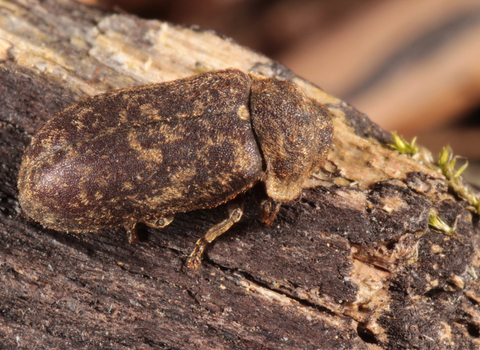
Deathwatch beetle ©Dr Malcolm Storey
Deathwatch beetle
Famed for its tapping in the middle of the night, supposedly heralding tragedy, the Deathwatch beetle is a serious wood-boring pest. In houses, their tunnelling can cause major damage.
Enw gwyddonol
Xestobium rufovillosumPryd i'w gweld
March to JuneTop facts
Stats
Length: 5-9mmCommon.
